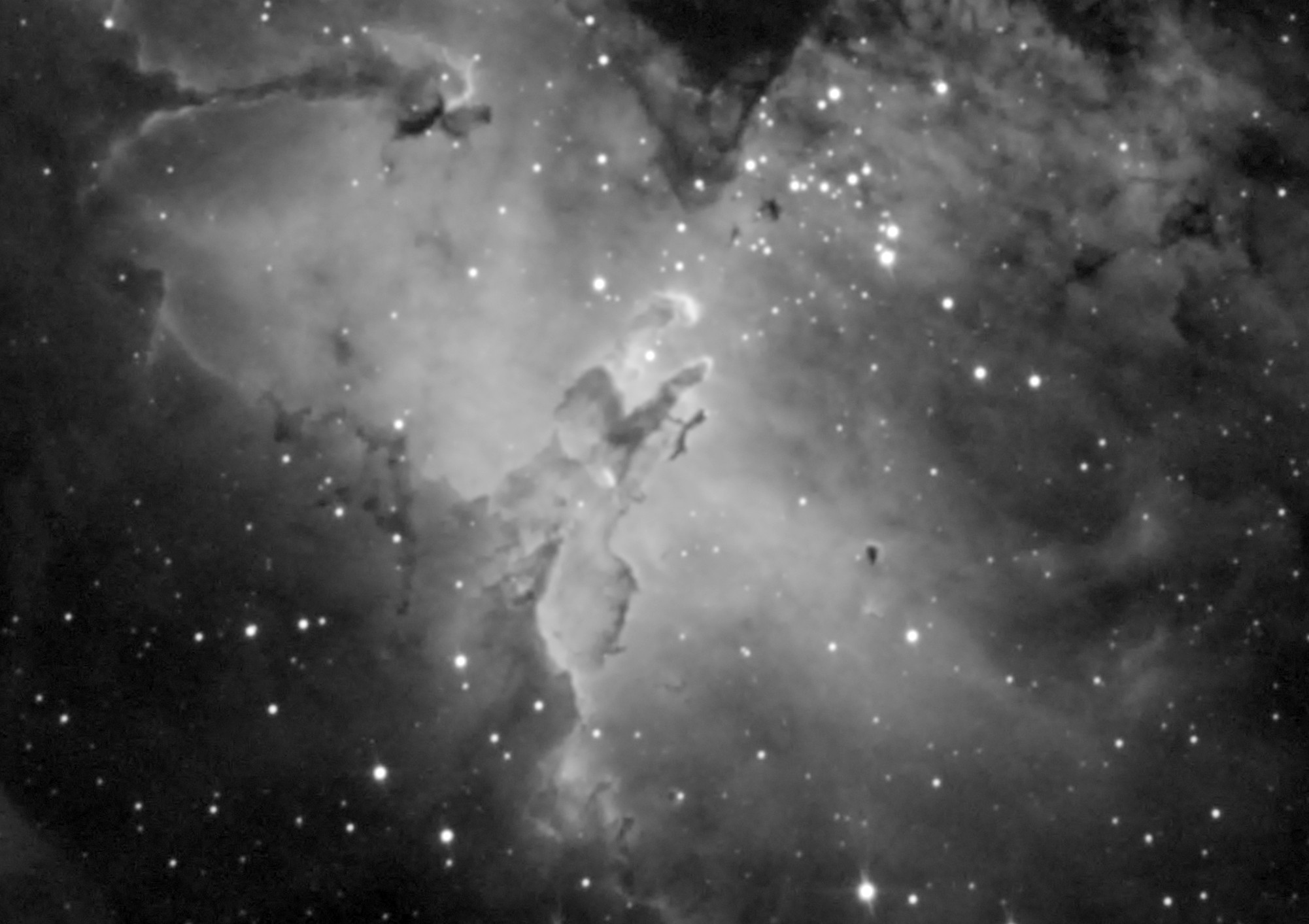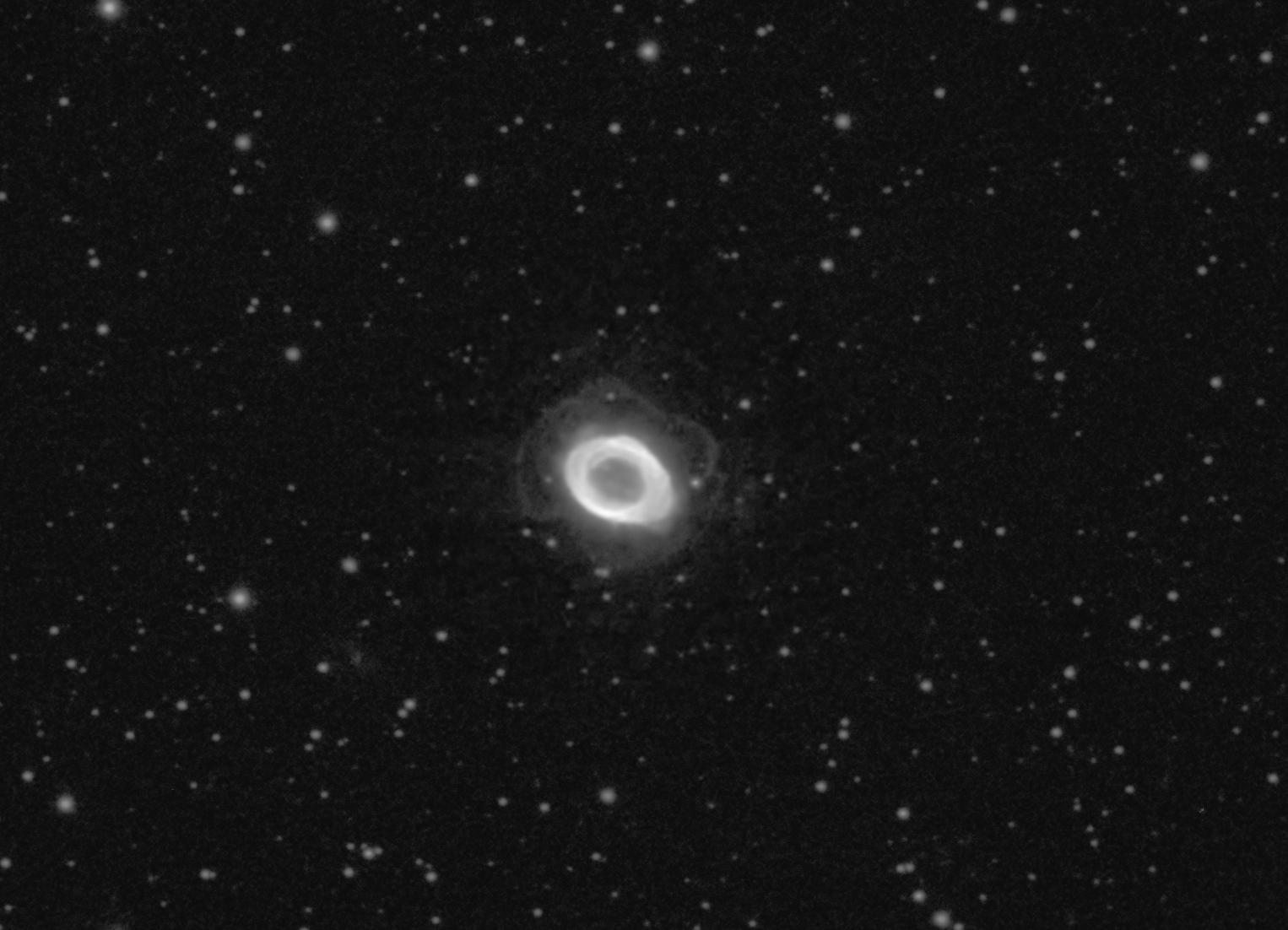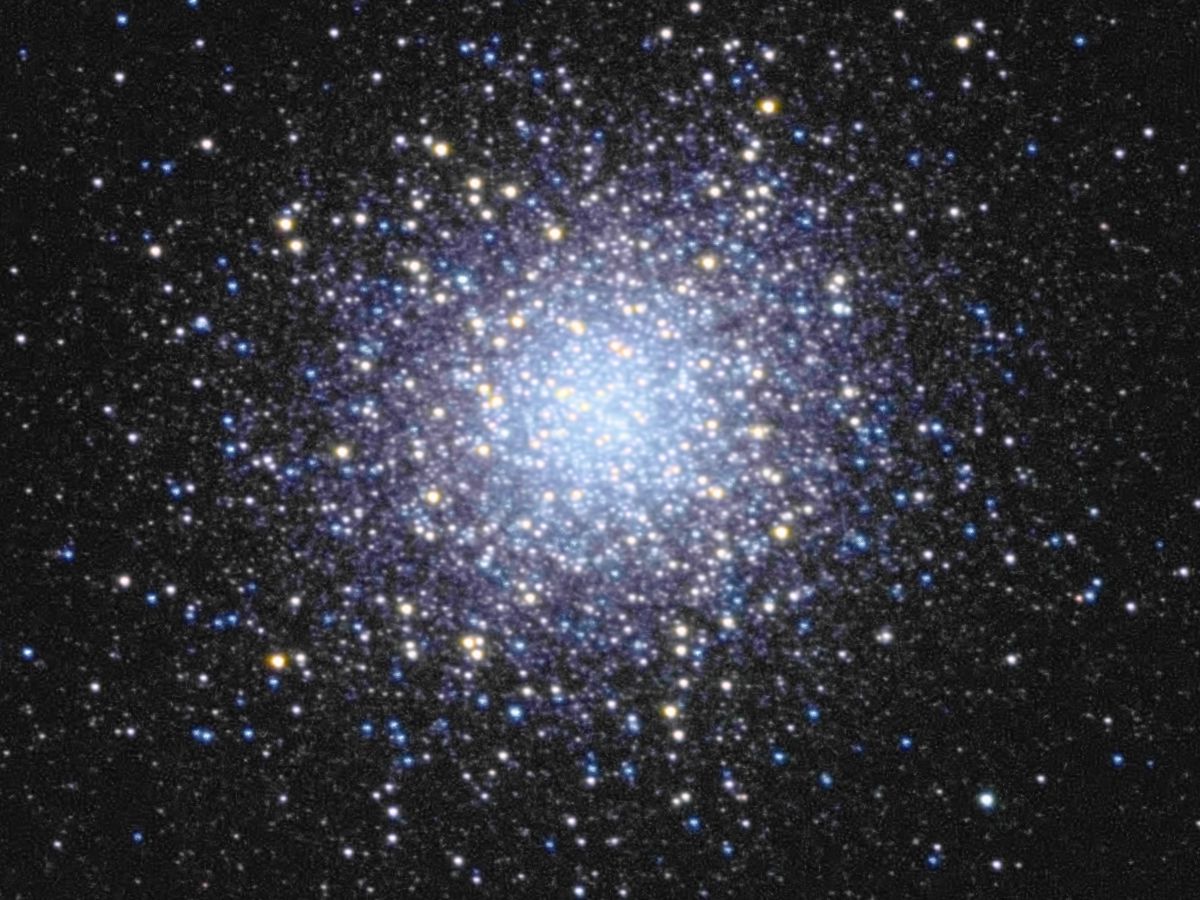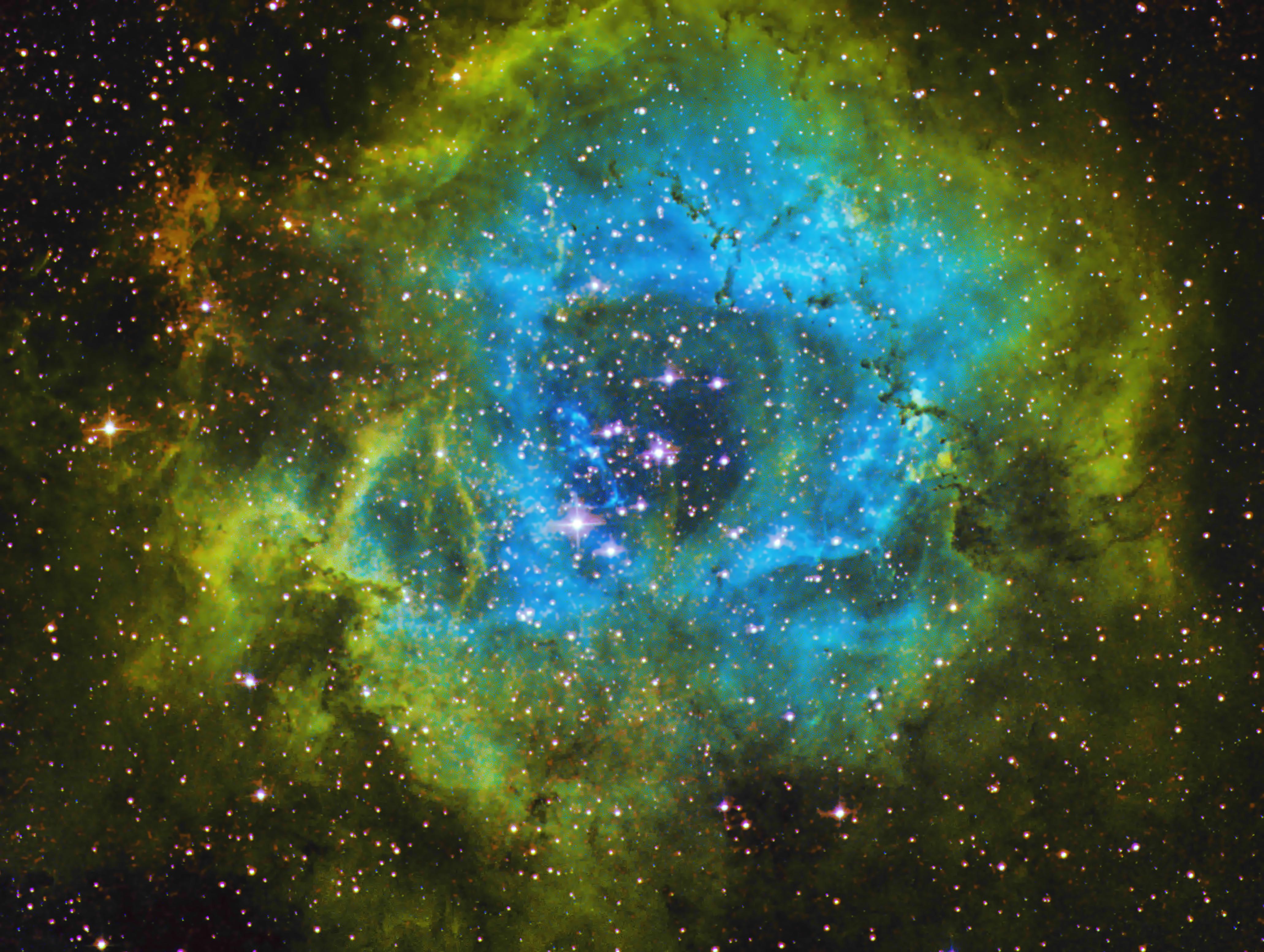Here's the home of 2020's 'Image of the Month' pictures. Enjoy!
2021 : 2020 : 2019 : 2018 : 2017 : 2016 : 2015
Image of the Month for December 2020: The Pacman Nebula, NGC281

NGC281, known as the 'Pacman Nebula' because of its distinctive shape, is a relatively easy object to photograph in the constellation of Cassiopeia. Close to its centre is a cluster of young stars, and the small dark patches are 'Bok globules' where condensing dust is forming new stars. This image is taken using narrowband filters to select light from ionised hydrogen, oxygen and sulphur then processed using a modified version of the 'Hubble palette'.
Image of the Month for November 2020: Mars at Closest Approach

This image shows Mars within a day or two of its close approach to the Earth in 2020. Taken using a Skywatcher 150PL and ZWO ASI120MC with a 3x barlow on an HEQ5 mount.
Image of the Month for October 2020: Triplanetary

This composite image shows Mars, Jupiter and Saturn imaged on the night of 13 September 2020. The camera used was a ZWO ASI120MC fitted to a Skywatcher 150PL with an x3 barlow.
Image of the Month for September 2020: The Crescent Nebula in Narrowband

The Crescent nebula is a (literally) fantastic target for astrophotography, as it lies in front of swirling clouds of nebulosity in constellation of Cygnus. This narrowband image using data for sulphur, hydrogen and oxygen brings out even more complexity in this wonderful patch of sky. This image was taken using Baader 7nm filters and a ZWO ASI1600MM Pro camera.
Image of the Month for August 2020: The North America and Pelican Nebulas

Few nebulas look as much like their namesakes as NGC7000 (left) and IC5070. This synthetic colour image comprises about 16 five-minute images each for hydrogen (Ha), sulphur, (Sii) and oxygen (Oiii) and processed using the 'Hubble Pallet'. Right click to see full details.
Image of the Month for July 2020: The Pillars of Creation

Every astronomer would like to have their very own Hubble Space Telescope, but unfortunately they come with a rather steep price tag. Instead, here's my image of the Pillars of Creation at the heart of the Eagle Nebula, M16, cropped out of an image of the whole nebula. Strictly Messier 16 is the open cluster of stars associated with the nebula rather than the nebulosity itself. Right click and view to see full size.
Image of the Month for June 2020: Messier 57 - Going Deep!

The amazing Ring Nebula has been featured as the image of the month before, but in May 2020 I amassed several hour's worth of narrowband Hydrogen Alpha data using my venerable Skywatcher 150PL. This doesn't pick up the stars very well, but has brought out the multi-lobed outer hydrogen envelope around the 'ring' structure. If you look carefully you can also see signs of a further outermost ring. Getting much deeper than this is going to need much darker autumn skies.
Image of the Month for May 2020: Messier 13

Messier 13 is a bright globular cluster containing thousands and thousands of stars. Globular clusters orbit the galaxy and M13 is one of the brightest and biggest, you can see it as a faint fuzzy star under Hercules' left armpit (if you think of him as facing you). The amazing thing about this image is s the sheer number of very faint stars at the edges of the cluster.
Image of the Month for May 2020: Messier 106

Messier 106 is a spiral galaxy that acts as a giant 'maser' or microwave laser. The thinly spread water molecules that cause this effect, visible only to radio telescopes, can still be detected in visible light images as they give the galaxy its distinctive purple colour.
Image of the Month for April 2020:

Revisiting M51, the Whirlpool Galaxy. The image is comprised of RGB channels plus a luminance layer and an additional Ha component in the red layer.
Image of the Month for March 2020: The Orion Nebula

The Orion Nebula, Messier 42. The raw data for the image is Ha, Sii and Oiii. The image maps the channels RGB (the Oiii (blue) signal has been adjusted to remove the magenta cast caused by the (red) Ha component.
Image of the Month for February 2020: The Rosette Nebula

Two different processings of a narrowband image of the Rosette Nebula in Monoceros. The raw data for both images is Ha, Sii and Oiii. The first one maps the channels RGB (the Oiii (blue) signal has been adjusted to remove the magenta cast caused by the (red) Ha component. The Sii areas are golden. The second processing uses the 'Hubble Palette' which is often used for images taken with the Hubble Space Telescope.
Image of the Month for January 2020: The Heart Nebula
Far from perfect, this image is my first attempt at a H-alpha/Oxygen-II image using a mono camera.




